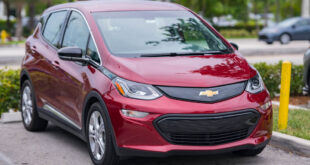EV Charging Network USA: Growing Infrastructure The adoption of electric vehicles (EVs) in the United States has seen unprecedented growth in recent years, bringing with it an urgent need for a robust and reliable EV charging network. The EV Charging Network in the USA is expanding rapidly, powered by government initiatives, private investments, and technological advancements. This article provides a detailed look at the current state of EV charging infrastructure, its challenges, and the road ahead.
The Importance of an EV Charging Network
Electric vehicles have become synonymous with sustainability, energy efficiency, and innovation. However, without an efficient charging network, the transition to EVs faces significant hurdles. The key benefits of a reliable EV charging network include:
- Encouraging EV Adoption: Accessible chargers reduce range anxiety among drivers.
- Environmental Benefits: Reduced dependence on fossil fuels decreases greenhouse gas emissions.
- Economic Growth: Creating charging stations generates jobs and boosts related industries.
Types of EV Charging Stations
The EV Charging Network in the USA comprises different types of stations designed for varying needs. These include:
1. Level 1 Chargers
- Description: Basic chargers using standard 120-volt outlets.
- Charging Time: Approximately 8-20 hours for a full charge.
- Ideal For: Home use and overnight charging.
2. Level 2 Chargers
- Description: Use 240-volt power supply for faster charging.
- Charging Time: 4-8 hours for a full charge.
- Ideal For: Public spaces, workplaces, and residential complexes.
3. DC Fast Chargers
- Description: High-powered chargers offering rapid charging.
- Charging Time: 20-60 minutes for 80% charge.
- Ideal For: Highways and urban hubs.
Key Players in the USA EV Charging Network
Several organizations and companies are instrumental in building the EV charging network, including:
- Tesla Superchargers: Proprietary network catering to Tesla owners but expanding to other EV brands.
- Electrify America: Offers universal compatibility and extensive coverage.
- ChargePoint: Focuses on workplace and commercial spaces.
- EVgo: A leader in fast charging solutions.
Challenges in Expanding the EV Charging Network
Despite advancements, the EV charging network faces significant challenges:
- Infrastructure Costs: Installing and maintaining charging stations is capital-intensive.
- Grid Limitations: Increased demand for electricity puts pressure on existing power grids.
- Standardization Issues: Different charging protocols complicate compatibility.
- Location Accessibility: Rural and remote areas often lack sufficient charging options.
10 Tips for Optimizing Your EV Charging Experience
- Use apps like PlugShare to locate nearby charging stations.
- Plan your trips around charging availability.
- Opt for Level 2 or DC Fast Chargers for quicker refueling.
- Install a home charger for convenience.
- Take advantage of charging station loyalty programs.
- Avoid overcharging to preserve battery health.
- Use renewable energy sources when possible.
- Learn about charging station etiquette, like moving your car when done.
- Monitor incentives for EV users in your state.
- Keep a portable charging cable as a backup.
FAQs About EV Charging Networks in the USA
- How many EV charging stations are there in the USA?
There are over 150,000 public charging ports, with the number growing rapidly. - Are all EV chargers compatible with my car?
Most public chargers support universal connectors like CCS and CHAdeMO. - How much does it cost to use a charging station?
Costs vary but typically range from $0.10 to $0.60 per kWh. - Can I install a charging station at home?
Yes, many EV owners install Level 2 chargers for home use. - What is the fastest charging option available?
DC Fast Chargers provide the quickest charging times. - Are there government incentives for EV charging?
Yes, federal and state programs offer subsidies and tax credits. - How long does it take to fully charge an EV?
Depending on the charger, it can take anywhere from 20 minutes to 20 hours. - Do charging stations work during power outages?
Most require grid power, but some have backup systems. - Is there a network for highway charging?
Yes, networks like Electrify America focus on highway corridors. - Can I use solar panels to charge my EV?
Absolutely! Solar-powered home systems are an eco-friendly option.
Conclusion
The EV Charging Network in the USA is a cornerstone of the country’s transition to sustainable transportation. While challenges remain, ongoing efforts by governments, private companies, and environmental advocates are paving the way for a seamless EV experience.
As the demand for EVs continues to surge, the expansion of charging infrastructure will play a pivotal role in shaping a cleaner, greener future. By leveraging advanced technologies and fostering collaborative efforts, the USA is setting a strong example for the global EV ecosystem.
 oto car insurance used car repair
oto car insurance used car repair
